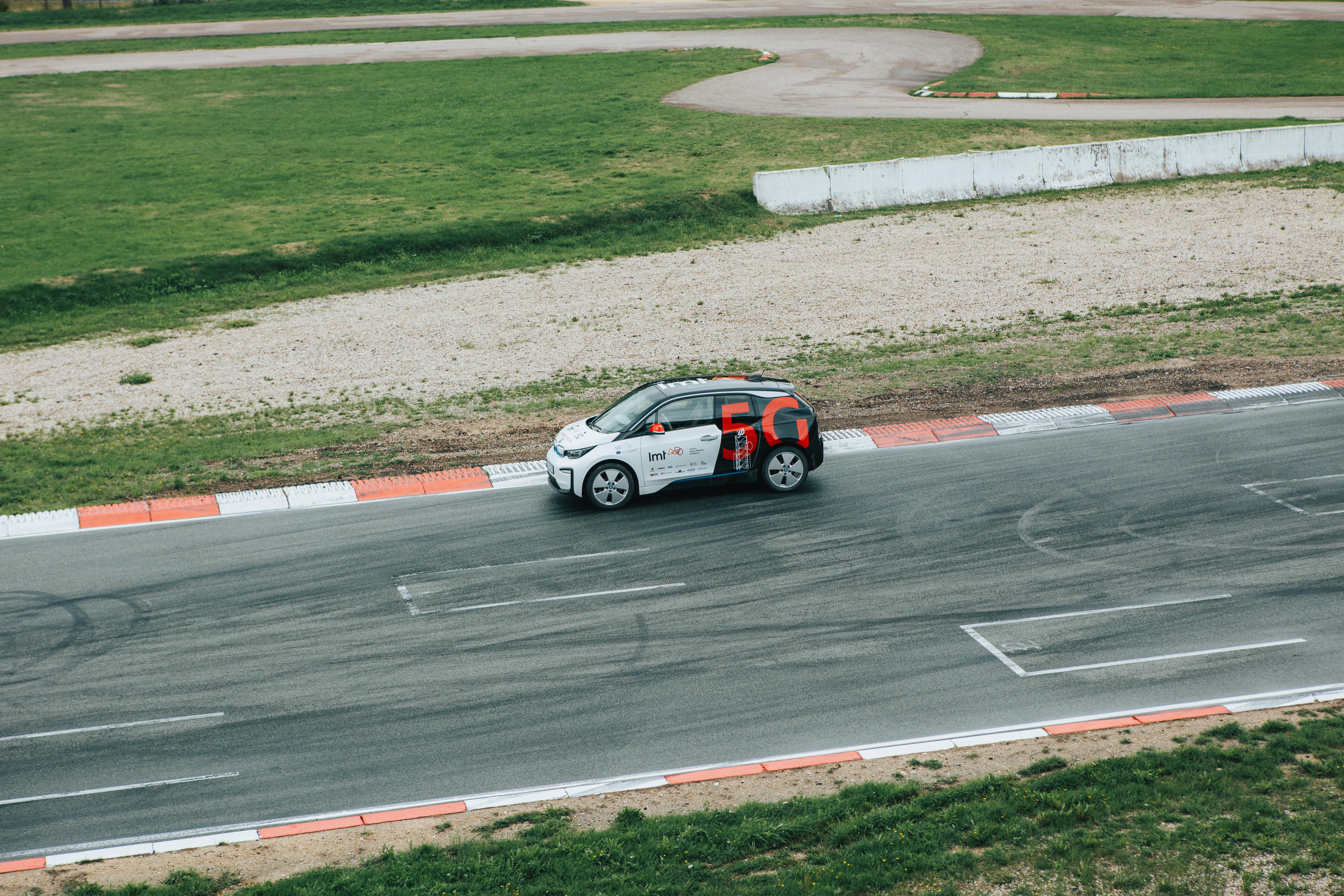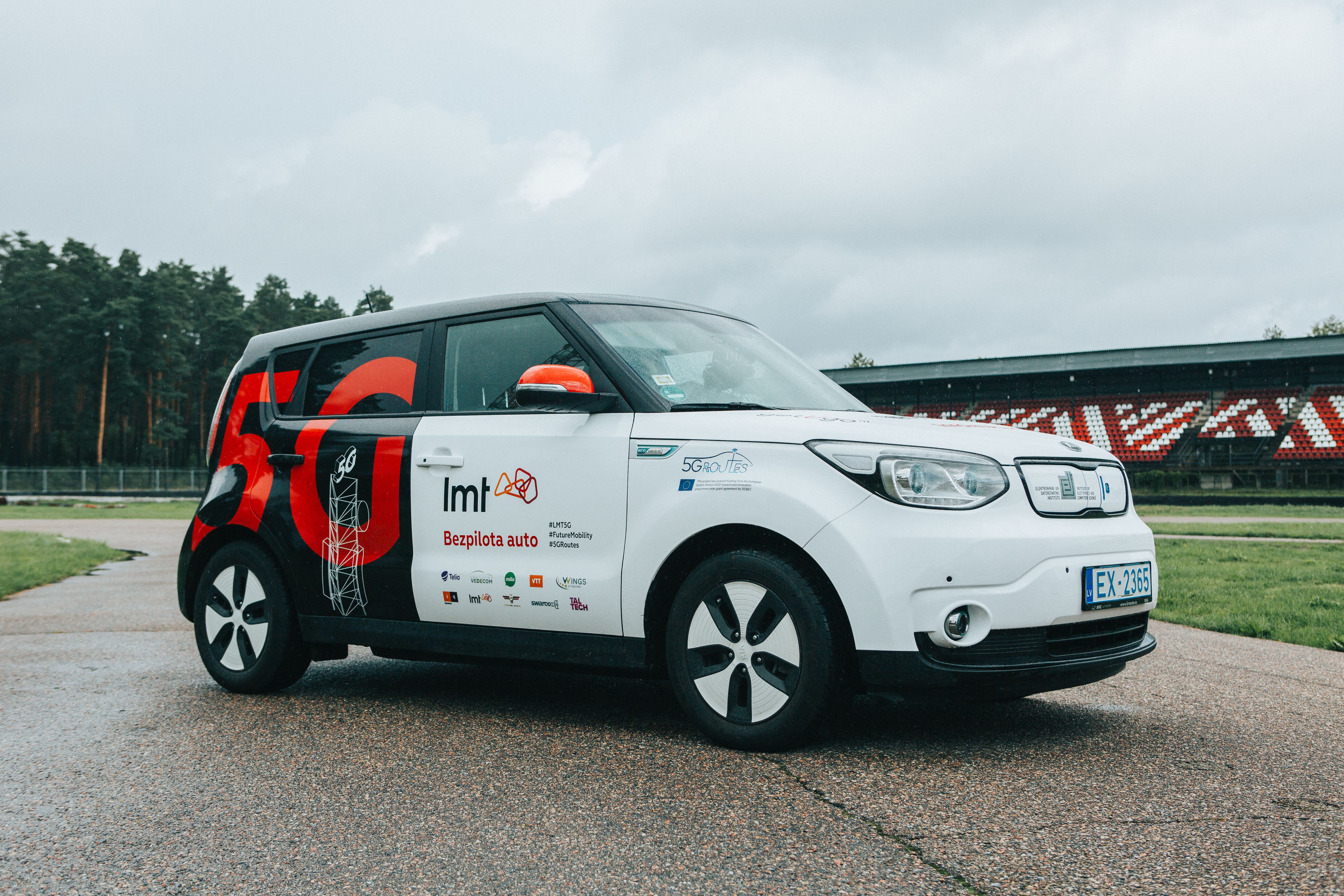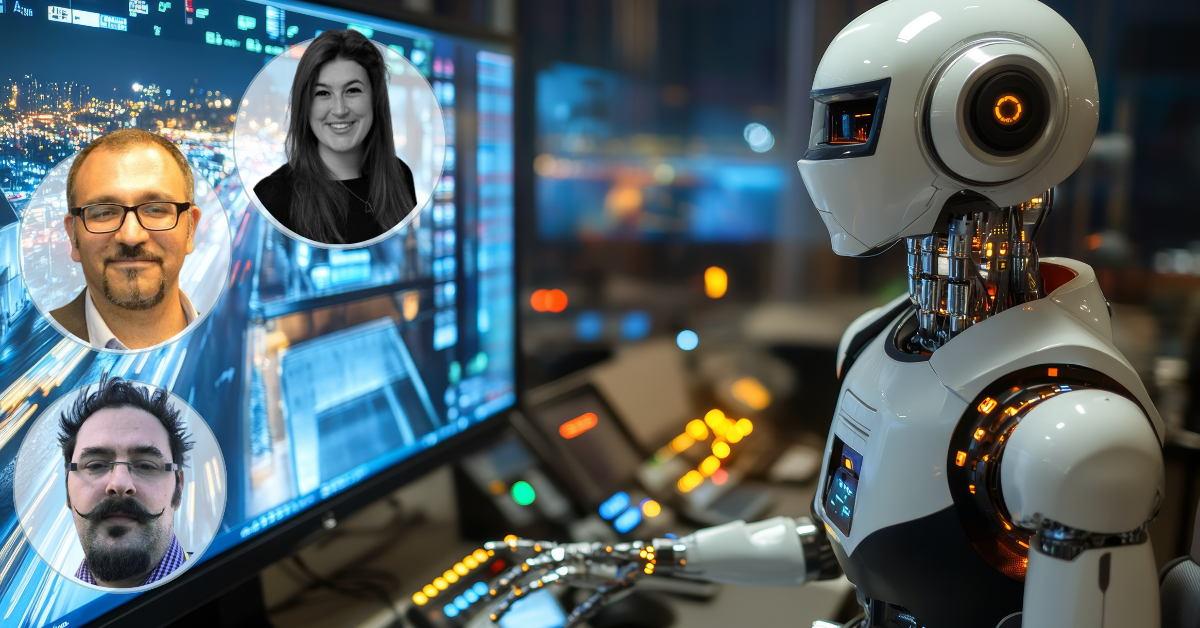Advanced 5G networks herald a new era of vehicle connectivity, but border crossings could create coverage blackspots where safety is compromised – a particular problem in urban settings and for long-distance platooning. This is why new EU research projects are looking to ensure seamless network handovers.
Baltic innovation could help to deliver the cross-border connectivity required for transnational connected and autonomous mobility (CAM) corridors across Europe’s patchwork of frontiers. A 5G testbed established by Latvian telecoms operator LMT will become the region’s first cross-border simulation space as part of the EU-funded 5G-Routes project. This collaboration between Latvia, Estonia and Finland will enable vehicles traversing the Baltic corridor to transition seamlessly between national 5G networks as a prelude to pan-European roll-out.
LMT is already renowned for 4G innovation and network efficiency and believes 5G will usher in a mobile-only future. “We are not just a telecoms company,” says LMT’s mobility innovation lead, Artūrs Lindenbergs. “We look at many verticals and 5G will provide totally new opportunities to build services and ecosystems.”
LMT is working on 5G-enabled beyond-visible-line-of-sight (BVLOS) drone operation and recently conducted a teleoperated vehicle demonstration. “Connected and autonomous vehicles (CAVs) are not in the future – because we’ve seen them working already,” says Lindenbergs. “It’s just a question of when it will escalate onto the roads.”
Collaborative 5G testing
In 2021, LMT launched its 5G mobility testbed at Riga’s Biķernieki racetrack, which is owned by Latvia’s Road Traffic Safety Directorate (CSDD). It will foster innovation by allowing Latvian and other developers to test 5G-based services on a non-commercial network. “Startups don’t have the resource of a closed-track with 5G for drive-by-wire vehicles,” says Lindenbergs. “Rather than sit in their offices, now the public sector, academic institutes and companies can collaborate to innovate and deploy new features much faster.”
For Lindenbergs, 5G is not merely an evolution of 4G, but an entirely different technology representing a new paradigm for mobility services. “4G is a best-effort network, which makes vehicle connectivity possible but gives operators no way to guarantee services,” he says. “But 5G network-slicing will allow us to totally guarantee the services we provide.”
For the first time, 5G also offers potential for the seamless cross-border network transitions which 5G-Routes will explore. Preliminary to this, LMT demonstrated its 5G remote driving capability in August 2021.

“It was the first use-case we showed at Biķernieki,” says Lindenbergs. “We were able to drive a car from another city over the existing 5G network.” A Kia e-Soul electric vehicle equipped with 5G and drive-by-wire hardware was successfully controlled from Cēsis, 80km to the northeast.
“In Cēsis, we had remote controls with a wheel and a display showing camera-feeds from the car,” explains Lindenbergs. “Everything worked smoothly and there was a chance for everyone to have a go at remote driving.”
Ensuring road safety
The Road Traffic Safety Directorate (CSDD) is invested in such experiments, both as custodians of Biķernieki and of Latvian road safety. “Before autonomous vehicles (AVs) can drive on the streets, they must be tested on a racetrack or some similar, closed territory,” says CSDD board member, Aivars Aksenoks. “We sometimes have different views: LMT professionals want to test AVs on the roads as soon as possible, but we prefer to be sure.”
Latvia’s Transport Ministry only recently issued regulations to allow even off-road tests. “In the event of some danger, the driver must instantly be able to assume control,” says Aksenoks. “We’re interested in cross-border connectivity, because the moment vehicles change between two networks is potentially dangerous. Unless it works properly, accidents could occur.”
“Crossing the border, it can take a few minutes to register on the other country’s network,” says Lindenbergs. “People can wait a minute to send an SMS or make a call, but we can’t have a situation where cars lose connection for even a few seconds.”
5G-Routes will create a virtual border at Biķernieki by combining the 5G networks of LMT and Estonian telecom operator, Telia. “There will be a handover connectivity between the two standalone networks,” says Lindenbergs. “It means we can test cross-border use cases and validate technical solutions.” Once proven at Biķernieki, the technology will proceed to field-tests in Valka-Valga.
A historic border
After World War I, Latvia fought a War of Independence against Soviet and later German forces, backed by Estonia, Poland and the Western Allies. When fighting concluded in 1920, Valka in Latvia and Valga in Estonia were separated by the border between two new Baltic states. “In Valka-Valga, we can validate use-cases in real conditions in a city between two cities, two countries and two networks,” says Lindenbergs. “Of course, our focus is not only on Valka-Valga, but on how to deploy cross-border connectivity across the whole of Europe.”

Lindenbergs anticipates 5G deployment on key routes by 2024, with end-user CAM services coming online from 2025. But what these will be remains a matter of guesswork. “Early-stage 5G networks are currently based on Release 15, with limited features for CAM,” he says.
The nature of services, their pricing and whether mobile network operators (MNOs) or traffic authorities will provide them all need working out. “If somebody knows the answers, I will give them a bonus!” says Lindenbergs. “Platooning is a key use-case; in each country, it could proceed case-by-case.”
Connected vehicle use cases
For traffic authorities, a mobile-only future offers considerable promise. “It will be easier to deploy intelligent transport solutions based on mobile networks, because you will no longer need to provide fixed networks with each camera and traffic-sign,” says Lindenbergs. 5G is harder to deploy than 4G due to differences in band-frequencies and network range, but will create as-yet unknown traffic use-cases. “There should be close collaboration between MNOs and road authorities to proceed with deployment together,” says Lindenbergs.
Aksenoks is cautious on the timescale for AVs rolling out commercially on Latvian roads. “Change will come step-by-step,” he says. “There are many unanswered questions: for instance, how to check AV systems during technical inspections.” He believes autonomy will advance gradually via driver assistance systems and expects full autonomy to manifest first in demarcated applications like public transport and cargo truck platoons. “But autonomy is not just a target in itself,” says Aksenoks. “These systems must help people in different situations.”
“Everybody dreams they will sit on the back seat, drink tea and maybe read a book,” says Lindenbergs. “But I agree with Aivars: it will happen step-by-step.” It is not only a question of autonomous cars, but of also deploying infrastructure which will increasingly take over the strain of autonomy from inbuilt vehicle systems. Lindenbergs notes that human error is implicated in over 90% of accidents and autonomous systems are in reality far safer than fallible, anthropoid drivers – but concedes that a shift in perception must come as the forerunner of public acceptance.
Winning hearts and minds
One way to familiarize a sceptical public with AVs could be first deployments in geofenced environments, before they are let loose in mixed ecosystems to contend with human drivers. “But I don’t believe that’s how we should proceed,” Lindenbergs argues. “We should consider how to connect older vehicles, perhaps with a smartphone or some other device, to get information from AVs and the infrastructure. Data-exchange between all road users is crucial, but just a beginning.”
“In Latvia, the average age of cars is 13 years,” adds Aksenoks. “Our car park is very, very old!” He therefore sees an opportunity for Latvia to lead European mobility innovation, replacing its current fleet with new, intelligent vehicles more rapidly than is feasible elsewhere. “We believe in our country,” he says. “Even when we disagree, we are proud to work with LMT and support these innovations.”
“Historically, LMT has been a top-three operator for data-consumption,” says Lindenbergs. “Latvians are heavy smartphone users and our focus is always to provide the newest technologies.” This not only applies to 5G: LMT was among the first operators to offer 4G and to provide flat-rate broadband and mobile data. “Our vision was not a ticking clock in the heads of customers, but to see our flat-rate service as an entrance to future content,” he concludes. “We want to be as user-friendly as possible and expect to play a key role in future mobility services.”
On the right track
The historic Biķernieki Racetrack is an ideal testbed for connected vehicle technologies
In its 1970s heyday, Biķernieki was the Soviet Union’s premier motorsport venue. In 1958, motorcycle racers Eduard Kiope and Kārlis Ošiņš embarked on a tour of Soviet racing tracks to determine what made a good circuit before selecting the site. Biķernieki held its first car and motorcycle races in July 1966 – with Kiope and Ošiņš winning the two-wheeled events.
“Biķernieki has great traditions,” says Latvia’s Road Traffic Safety Directorate (CSDD) board member, Aivars Aksenoks. “It has many different configurations: for drift-driving, rallycross, motorcycles and speedway. Although close to the city of Riga, it may be the world’s only racing track located in a forest.”

Kiope and Ošiņš identified the site because it was close to Riga’s population, while the forest would serve to reduce noise nuisance and hazardous crosswinds. Biķernieki’s 3.6km Ring of Skill was designed for motorcyclists and its 3.7km Speed Ring for cars. Its variety of curves and gradients and the absence of long straights demand a high level of skill from racers.
In 1991, Latvian independence followed a period of Soviet economic decline during which Biķernieki fell into disrepair. “It was in very poor condition,” Aksenoks recalls. “Nobody was in charge, so the Transport Ministry asked us to take responsibility.”
“Our main task is traffic safety,” he says. “We provide technical inspections, vehicle registration and driver qualification. Ten years ago, we also became responsible for Biķernieki and invested in its reconstruction.” Since 2011, CSDD has restored Biķernieki’s speedway track and grandstands, rebuilt its race control building, renewed its curbs and repaved sections of track.
“Lately, Biķernieki has hosted high-level competitions including the World Rallycross Championship,” says Aksenoks. “LMT evaluated the advantages of the site as a 5G testbed and we started our collaboration four years ago.”
Borders across Europe
The Latvian project is just part of a larger EU research movement looking to develop seamless 5G networks - another is 5G-Mobix
The EU-funded 5G-Mobix project is focused on developing 5G use cases in transportation, in particular enabling 5G functionality across borders.
EU countries and industry first agreed to establish cross-border 5G corridors in September 2017. Thanks to these corridors, Europe is leading the world in testing 5G technology for connected and automated driving and mobility.
5G-Mobix is testing automated vehicle functionalities using 5G core technological innovations along two live cross-border corridors and a number of local trial sites, under varying conditions of vehicular traffic, network coverage and service demand.
One of the real-world trial sites is the border crossing between Ipsala Turkey and the Greek town of Kipoi. At this border crossing, there is a customs area, where administrative procedures and x-ray checks on passing vehicles are performed, and innovations such as truck platooning and assisted border crossing are being implemented as a part of the trial.
The other real-world border corridor test site is between Portugal and Spain and six pre-deployment trial sites are in Germany, China, Finland, France, South Korea and the Netherlands.
“This project is important because automated mobility is necessary for the future in order to meet our demands for efficiency and sustainability. To make this happen, cooperative mobility needs multiple actors from industry to solve the potential challenges,” says Nazli Guney of Turkcell, one of the project partners at the Turkey-Greece crossing,.
“Lately, Biķernieki has hosted high-level competitions including the World Rallycross Championship,” says Aksenoks. “LMT evaluated the advantages of the site as a 5G testbed and we started our collaboration four years ago.”
5G vs V2V in the Netherlands
Collision avoidance is a further promise of 5G technology – but will latency levels be low enough to ensure safety? At the 5G-Mobix Netherlands Trial Site trials are underway to compare 5G collision avoidance with well-established wi-fi based V2V technology. The trials are being undertaken in collaboration with KPN together with VTT and TNO.







